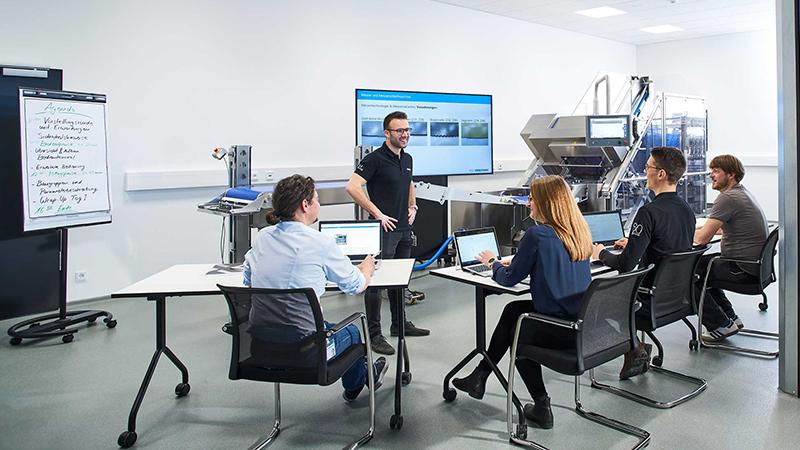It is difficult to find an organization in the world today that does not have one type of coaching program, whether by providing external coaches to employees or training employees in coaching skills internally. In this article, we will discuss the pillars of coaching culture and explore how to launch a coaching program using a 10-point plan.
Here are 3 principles that underpin the coaching culture:
1. Responsibility:
The more accurate and detailed your management of employees, the less they rely on thinking on their own, so after presenting a clear strategic plan, training in the necessary skills, and providing the right information give your employees as much freedom as possible to make their own decisions and control their field of work.
As Sir Richard Branson says: "Hire the right people, and let them work freely!"
Different personalities need to be employed to form a team. It may include extroverts, introverts, people looking at the big picture, people interested in detail and paperwork, lawyers, therapists, clowns, and the wise, to name a few. As for human relationships, there are two other types: people who value differences and diverse skills, and those who view them as a threat.
It seems that people rise to the challenge, whatever their responsibilities, provided they work in a safe and supportive environment.
2. Self-Belief:
Proposing new ideas at work requires confidence and courage to implement them. To build self-confidence, people need the opinions of others and opportunities to build confidence in their abilities through trial and error. A child who learns to walk will fall many times, but they will not need anyone to teach them to walk. They will be helped by encouragement and support when their efforts improve.
Most parents know this instinctively and practice it in their daily lives, yet they may act very differently when supervising someone who is learning a new role at work.
As Sir Richard Branson says, “You have to trust that the people around you will learn from their mistakes, there is no point in blaming and accusing.”
3. Don't Blame Others:
Creating an environment in which dealing with errors is part of the learning process - rather than being considered punishable - is essential if the organization is to follow the coaching culture.
It is rare to have an organization in which the three pillars are fulfilled and even if they exist. One of those pillars may fail from time to time, yet the more appreciated it is, the higher the level of trust throughout the organization.
How to Launch a Coaching Program?
The question of where to start the coaching program is usually more about budget and support than about choice. The first dilemma is whether to take advantage of external coaches or train managers internally. Among these two possibilities is which employees should coach and whether managers should be trained in coaching skills or trained to be certified internal coaches.
Sometimes organizations hope that by providing external coaches for one level of management, the training will carry over to all lower levels, but despite some improvement, this approach may bring to the general culture, this cannot be a completely satisfactory solution. That's because having a coach, being a coach, and teaching coaching skills are three completely different fields, the first will not cover all the skills required in the second and third fields.
If some training is going to take place, the next question is to what extent should managers be trained? As to become a manager who provides coaching fluently and smoothly, you will need to practice it to be able to master it and it is not possible to achieve this within two days spent in a training course, knowing that by training people to be internal coaches, they absorb the training style and skills to the extent that these skills are automatically present in any situation. Spending two days in the training room provides a simple idea of what a coach is, but it won't be enough to get you the technique or practice you need to become a coach.
Remember the Chinese proverb, "If you give someone a fish, you feed them for a day, but if you teach them to fish, you feed them for life." If budgets are limited, it is likely that in the long run the organization will gain more from coaching its managers in coaching skills than it pays for external coaches, meaning that managers will train each other without the need for external coaches again.
10-Point Plan To Build a Coaching Culture:
The following is a plan that may form the basis of any organization that wants to acquire a coaching culture:
1. Vision and Objective:
The approach to training in any situation starts with looking at the desired outcome, making the path clearer, unifying the staff, balancing the objective, allowing progress to be measured, and confirming whether the project is heading into the right direction or not. This can be accomplished in a variety of ways, from talking to employees to finding out what they want, to launching a comprehensive training needs analysis that includes surveys, focus groups, and interviews.
Try to get a clear picture of what type of program best fits the needs of the organization, whether it's hiring external coaches, training internal coaches, or training managers in coaching skills. Simply, talk to employees and find out what they want.
2. Assessment of the Organization's State:
Once the objectives of the program have been defined, the current situation should be explored: What resources already exist? What is required? What needs to change? What has been accomplished so far? And who do we need to engage? If a large analysis of training needs is underway, this phase should be covered at the time the objectives are set.
3. Identification of Contributors:
Contributors are people who are affected by or interested in the coaching program.
There are people who will influence the program, people we will need to endorse, others who will attend the program, and those who will shape and plan for it. Gaining supporters is essential because without them the program would never exist, and the people who shape the program are also essential in terms of program planning and process leadership. However, when designing the program, it is useful to hear the views of everyone who will be affected, not just the main players.
Actual job roles in each department may vary from organization to another, and some may fit into several categories. So, always try to involve the people who support your plans and who have an influence on the decision makers. All contributors are important and some of them are essential to the program's work, as:
- Influencers may be board members, heads of HR and organizational development, and department heads.
- Supporters may be CEOs, CFOs, and department heads.
- Users may be managers, team leaders, and account managers.
- Contributors to defining the format of the program may be the heads of learning and development, HRs, and heads of departments.
The categories vary from organization to another.
4. Obtaining Approval:
After assessing the current state of the organization and developing an accurate vision with all contributors, approval should now be ready. Each party will have a sense of responsibility for the program and how it meets its needs, and the vision will increase enthusiasm and energy, meaning that the program is already building momentum.
5. Starting Place:
Note that this is at the bottom of the list as the foundations must be laid even before the program is planned, let alone implemented. It's like decorating a house; That is, if the foundation is not correct, the final result will be affected.
Now is the time to search for potential service providers and limit them to people who can help the organization achieve the objectives identified by the training needs analysis. Start with simple conversations , a lot can be learned by talking to experts even if they are trying to sell you their products, this is an effective and free way to find out what you need to know. These conversations may lead to further research and through it all you will begin to build a picture of the best program to choose.
Next, it is simply a matter of narrowing down the range of potential service providers, 80% of the value of anything that involves people depends on the quality of those people. After you have identified a group of providers with the right experience, decide who you want to work with and talk to them. These providers should only participate in a detailed bidding process to save your time and theirs.
6. What to Measure:
Effective measurement begins even before the program is designed. Once we have achieved the objectives of the program, we can establish metrics to measure and it is important to distinguish the benefits derived from the program compared to other programs or situations that may occur in the organization at the same time by asking these questions:
- What are the benefits derived from the coaching program, and what is its estimated percentage?
- What tangible benefits accrue to the organization thanks to the coaching program? If the benefits are qualitative, try to link them to quantitative benefits, here's a conversation for example:
- ROI Reviewer: How did the coaching program benefit the organization?
- Participant: Our clients have become satisfied.
- ROI Reviewer: What impact does this have on the organization?
- Participant: We're selling more products.
- ROI Reviewer: What is the percentage increase in profits?
- Participant: 10%.
7. Executing Trial Projects:
It is recommended to start one or more trial programs to ensure that everything is on track. Ideally, some key contributors should be involved so that they can make suggestions on how to modify the training or coaching to be as beneficial as possible in terms of achieving the agreed project objectives.
8. Assessment and Future Planning:
Once the trial programs have been implemented, the program can be reassessed to determine what adjustments need to be made to suit a particular organization, and the views of all contributors involved should be surveyed so that not only will the valuable information emerge, but their sense of responsibility to the program will be assured once again.
9. Roll Out The Program:
After making the modifications, you can roll out the entire program with confidence that it will be enthusiastically received and that it will achieve the desired objectives.
10. Maintaining Momentum:
Coaching programs have their own momentum because of the enthusiasm they generate and because their impact is direct and noticeable by all the workforce, employees see that managers who have received training or newly coached communicate more effectively, achieve better results and become better at dealing with them. If employees are trained to be coaches, this feedback can be recorded and leveraged by setting up coaching activities such as co-coaching groups or supervision and providing CPD coaching (continuing professional development) and review days.
In Conclusion
Training programs are similar to the “happiness virus” where the positive effects spread so much that they reach a tipping point where the entire organization changes and people become happier, kinder, and more aware of themselves, others, and the impact of one on the other and on the whole.
Perhaps the best outcome of all is that performance improves as employees are freed from the effects of fear and excessive stress in their working lives.











